

Act now Donate
'human safaris' to the jarawa.
Although India’s Supreme Court in 2002 ordered that the highway through the Jarawa’s reserve should be closed, it remains open – and tourists use it for ‘human safaris’ to the Jarawa.
Poachers enter the Jarawa’s forest and steal the animals the tribe rely on for their survival. They have also introduced alcohol and marijuana and are known to sexually abuse Jarawa women.
In 1999 and 2006, the Jarawa suffered outbreaks of measles – a disease that has wiped out many tribes worldwide following contact with outsiders.

The tribes of the Andaman Islands – the Jarawa, Great Andamanese, Onge and Sentinelese – are believed to have lived in their Indian Ocean home for up to 55,000 years.
They are now vastly outnumbered by several hundred thousand Indians, who have settled on the islands in recent decades.
Today, approximately 400 members of the nomadic Jarawa tribe live in groups of 40-50 people in chaddhas – as they call their homes.
Like most tribal peoples who live self-sufficiently on their ancestral lands, the Jarawa continue to thrive, and their numbers are steadily growing.
They hunt pig and turtle and fish with bows and arrows in the coral-fringed reefs for crabs and fish, including striped catfish-eel and the toothed pony fish. They also gather fruits, wild roots, tubers and honey. The bows are made from the chooi wood, which does not grow throughout the Jarawa territory. The Jarawa often have to travel long distances to Baratang Island to collect it.
Both Jarawa men and women collect wild honey from lofty trees. During the honey collection the members of the group will sing songs to express their delight. The honey-collector will chew the sap of leaves of a bee-repellant plant, such as Ooyekwalin, which they will then spray with their mouths at the bees to keep them away. Once the bees have gone the Jarawa can cut the bee’s nest, which they will put in a wooden bucket on their back. The Jarawa always bathe after consuming honey.
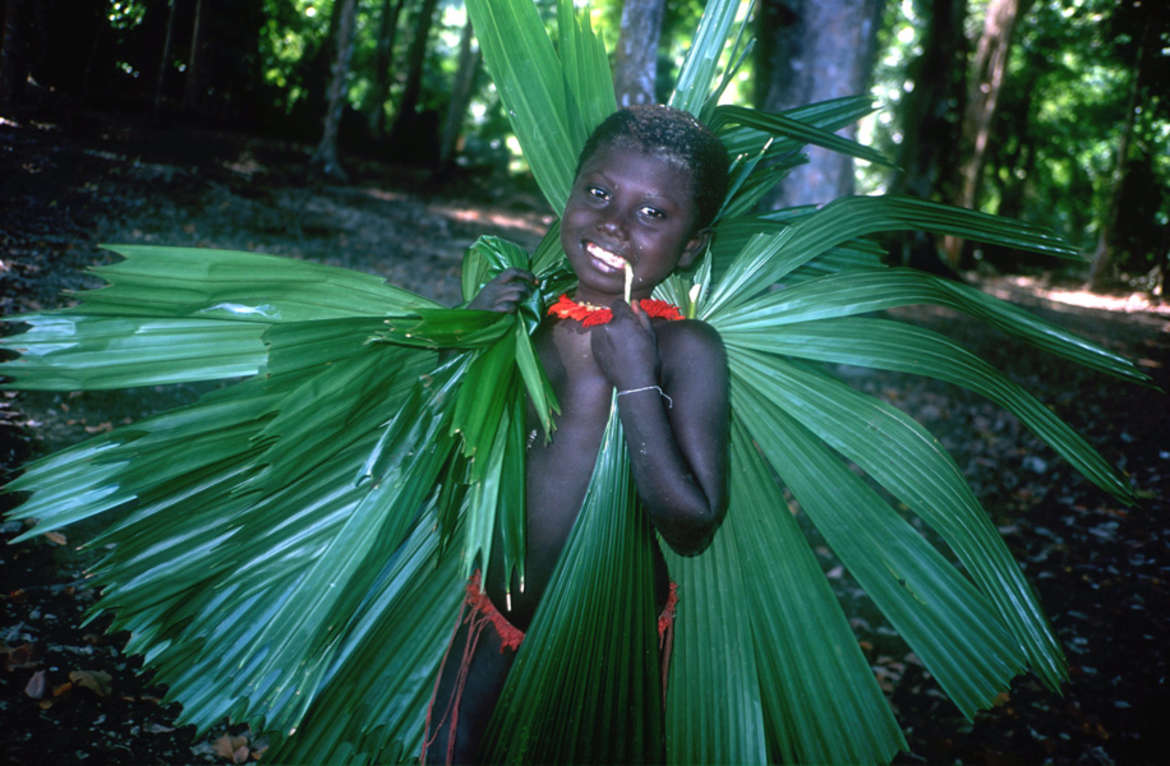
A study of their nutrition and health found their ‘nutritional status’ was ‘optimal’. They have detailed knowledge of more than 150 plant and 350 animal species.
The Jarawa of the Andaman Islands enjoy a time of opulence. Their forests give them more than they need.
In 1998, a few Jarawa started to emerge from their forest for the first time without their bows and arrows to visit nearby towns and settlements.
In 1990 the local authorities revealed their long-term ‘master plan’ to settle the Jarawa in two villages with an economy based on fishery, suggesting that hunting and gathering could be their ‘sports’. The plan was so prescriptive it even detailed what style of clothes the Jarawa should wear. Forced settlement had been fatal for other tribes in the Andaman Islands, just as it has been for most newly-contacted tribal peoples worldwide.
I am civilized and they are not civilized.
Following a vigorous campaign by Survival and Indian organisations, the resettlement plan was abandoned, and in 2004 the authorities announced a radical new policy: the Jarawa would be allowed to choose their own future, and that outside intervention in their lives would be kept to a minimum. This was an enormous success for the international and Indian campaign.
No attempts to bring them to the mainstream of society should be made.
What problems do the Jarawa face?
Of the four Andaman Island tribes, it is the Jarawa’s situation that is the most precarious.
The Jarawa face many threats:
The road that cuts through their territory brings thousands of outsiders, including tourists, into their land. The tourists treat the Jarawa like animas in a safari park.
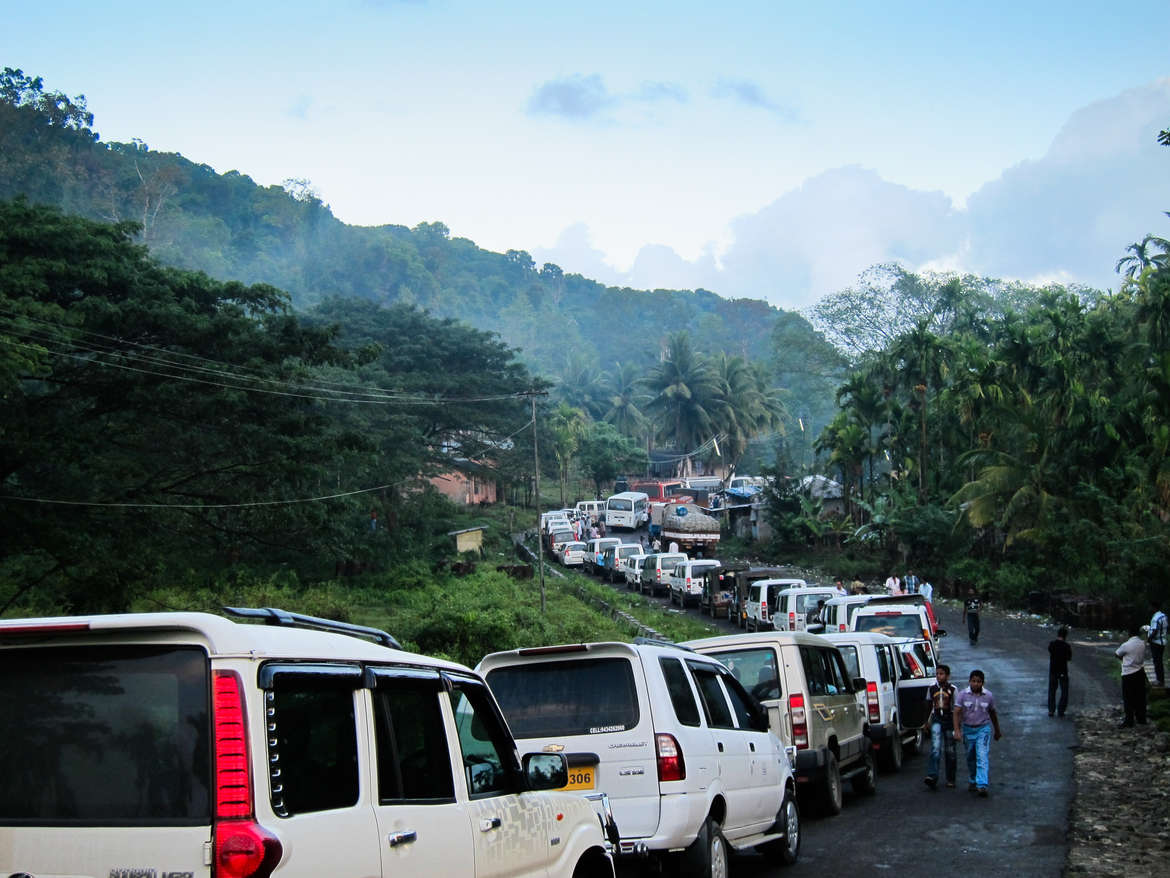
- Outsiders, both local settlers and international poachers enter their rich forest reserve to steal the game the tribe needs to survive.
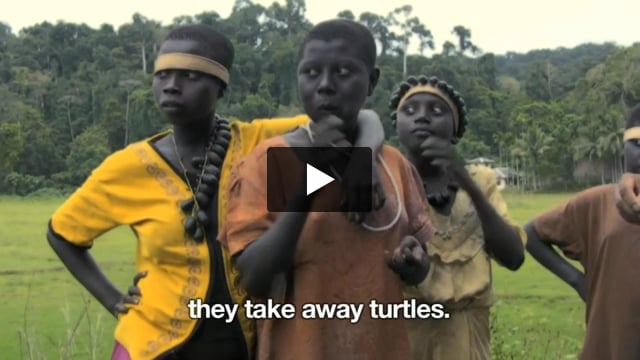
Jarawa denounce poachers who invade their land. This group was filmed as they voluntarily came ou...
They remain vulnerable to outside diseases to which they have little or no immunity. In 1999 and 2006, the Jarawa suffered outbreaks of measles – a disease that has wiped out many tribes worldwide following contact with outsiders. An epidemic could devastate the tribe.
Jarawa women have been sexually abused by poachers, settlers, bus drivers and others.
The girls say, that the outside boys pressure them to do a lot. They pressure them with their hands and fingernails, when the girls get angry. They chase them under the influence of alcohol. They have sex with the girls… They drink alcohol in the girls’ house. They sleep in the Jarawa’s house. They smoke marijuana and then chase the girls.
There is pressure from some, including the island’s MP, to force the Jarawa to integrate into the ‘mainstream’ of Indian society.
The fate of the Great Andamanese and Onge peoples serves as a vivid warning of what may happen to the Jarawa unless their rights to control who comes onto their land and to make their own decisions about their ways of life are recognized.
Attempts to ‘mainstream’ the Jarawa
In India, ‘mainstreaming’ refers to the policy of pushing a tribe to join the country’s dominant society. It has a devastating effect on tribal peoples. It strips them of their self-sufficiency and sense of identity, and leaves them struggling at the very margins of society. Rates of disease, depression, addiction and suicide within the tribal community almost inevitably soar.
In 2010 the Andaman Islands’ member of parliament called for ‘quick and drastic steps be taken to bring the Jarawa up to the basic mainstream characteristics’ and for children to be sent to residential schools in order to ‘wean’ the children away from the tribe. He described the Jarawa as being ‘in a primitive stage of development’ and ‘stuck in time somewhere between the stone and iron age’.
Influential figures in India, including government ministers, have often called for the Jarawa to be assimilated, believing that they are ‘backward’ or ‘primitive’. This request, however, has not come from the Jarawa, who show no sign of wanting to leave their life in the forest.
The outsiders are bad men. They abuse us. I prefer to stay in the jungle.
Such an attitude can stem from racist disdain or from a genuine concern for the tribe’s welfare; either way it is always based on a misunderstanding of both the Jarawa’s current excellent quality of life, and the miserable experiences of tribal people who have been forcibly assimilated.
Since 2004, the Indian government’s policy towards the Jarawa has been very positive: the general principle is that the tribe themselves should control their future, with minimal intervention from the state. However, there are still many who are clamoring for this to change.
What is Survival’s position on ‘mainstreaming’?
Survival advocates neither isolation nor integration, believing – as with all tribal peoples – that they themselves are best placed to determine what, if any, changes they wish to make to their lives. Crucial to having the time and space to make these decisions is that their land is properly protected from outside incursions.
Land Encroachment and poaching
The principal threat to the Jarawa’s existence comes from encroachment onto their land, which was sparked by the building of a highway through their forest in the 1970s. The Andaman Trunk Road ( ATR ) brings outsiders into the heart of their territory.
The ATR has also encouraged ‘human safaris’, where tour operators drive tourists along the road in the hope of ‘spotting’ members of the tribe.
Illegal hunting, fishing and gathering, from both local and foreign poachers, remains a serious threat to the Jarawa’s survival. The theft of the food they rely on risks robbing them of their self sufficiency and driving the tribe to extinction.
What is Survival’s position on land encroachment and poaching?
Since 1993 Survival has been lobbying the Indian government to close the Andaman Trunk Road, believing that only the Jarawa should decide if, when and where outsiders traverse their land.

In 2002, the Indian Supreme Court ordered the closure of the road, yet it still remains open.
In 2013, following a campaign from Survival and local organization ‘Search’ to ban ‘human safaris’, the Supreme Court banned tourists from travelling along the ATR for seven weeks. After the Andaman Authorities changed their own rules in order to allow the human safaris to continue, the Supreme Court had no choice but to reverse the ban.
In October 2017, the Andaman Authorities opened the long-awaited alternative sea route to Baratang. This sea route was supposed to stop the human safaris. But despite the authorities’ commitment to ensuring all tourists would have to use the sea route, very few currently do, and the market in human safaris along the road is flourishing.
Survival has been calling for the Andaman authorities to clamp down on poaching and to ensure that those arrested are prosecuted. Although in recent years many poachers have been arrested, none have been been sentenced by the courts, despite the offence carrying a prison term of up to seven years.
Act now to help the Jarawa
Survival’s Andamans campaign focuses on the Jarawa, because their situation is the most precarious of the four tribes. Your support is vital for the Jarawa’s survival. There are lots of ways you can help.
- Stand with uncontacted tribes
- Donate to Survival to support campaigns for threatened tribal people.
- If you want to get more involved, contact Survival
Join the mailing list
More than one hundred and fifty million men, women and children in over sixty countries live in tribal societies. Find out more about them and the struggles they’re facing: sign up to our mailing list for occasional updates.
News from the Jarawa

Andaman tribal women widowed by poisoning remarry
Four women from the tiny Andaman tribe the Onge, who were widowed last month in a tragic poisoning incident, have remarried.

Outrage as tour operators sell “human safaris” to Andaman Islands
Andaman government fails to stop degrading and exploitative tribal tourism despite opening of 'alternative sea route'

End in sight for India's notorious human safaris
Exploitative tribal tourism damaging lives of recently contacted tribe could end, after Survival-led boycott
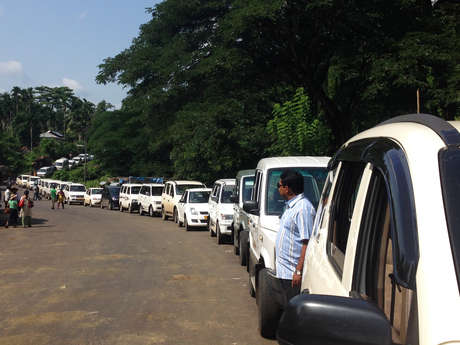
India misses deadline to end Andaman 'human safaris'
Authorities on India's Andaman Islands have failed to end 'human safaris' to the vulnerable Jarawa.

Major investment in 'human safaris' road sparks fears for tribe
Plans for widening and building bridges along the Andaman Trunk Road have been condemned by Survival
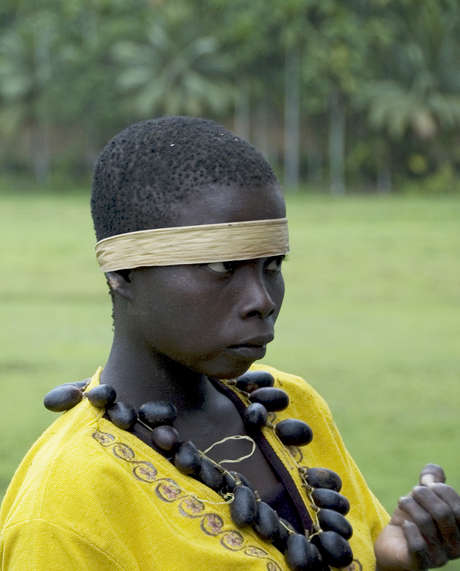
Survival condemns regressive election pledges on Jarawa tribe
Regressive pledges include bringing the Jarawa tribe into the mainstream; and removing a protective buffer zone around their reserve.
- International edition
- Australia edition
- Europe edition
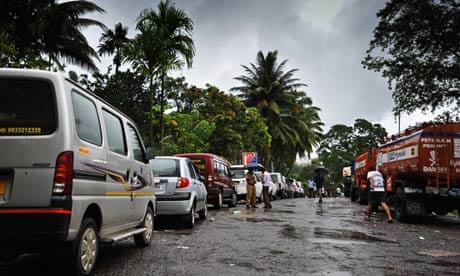
Human safaris may be banned, but still tourists flock to Andaman Islands
"Jarawa!" The cry goes up from the front of the bus and, in an instant, the tourists are on their feet, craning their necks to see a small boy clutching a short spear.
He is standing on the edge of the jungle, watching the convoy of vehicles thunder past on the Andaman trunk road. The tourists lurch towards the right-hand side of the vehicle to catch one last glimpse of him and then the government-run bus is past and he is gone.
It is Wednesday morning, three days before the start of the official tourist season and eight months since an Observer investigation into the plight of the aboriginal Jarawa tribe , and an accompanying video of young tribal women dancing semi-naked for food, scandalised India and brought international condemnation of the Andaman human safaris.
The spectacle of more than a third of a million people pouring through the dwindling tribe's jungle reserve each year, many of them intent on catching a glimpse of its largely reclusive inhabitants, prompted an outpouring of fury that could not be ignored.
The Indian government moved swiftly to introduce laws punishing interference with the Jarawa with seven years in jail. Two policemen were arrested over the video, and the inspector general of police was transferred after he was caught taking his family on a human safari. In July the country's supreme court – which ordered the closure of the road in 2002 – banned commercial and tourist activity inside a 5km buffer zone around the tribal reserve, warning that any breach of the order would amount to contempt of court. That should have been the end of the human safaris, the term coined to describe the eight daily convoys of vehicles that run up and down the road through the heart of the pristine jungle.
Last week, however, when the Observer returned to the Andamans, it was business as usual for the human safari industry. Not only does it continue, but it does so with the blessing of the Andaman and Nicobar administration, which runs its own daily tourist bus through the reserve. It costs 1,000 rupees (£11.36) for a ticket on the air-conditioned bus (850 rupees without air conditioning), ostensibly to visit a limestone cave and mud "volcano" on Baratang island, which lies 100km north of the capital, Port Blair – and inside the buffer zone fixed by the supreme court.
Hundreds of private tour operators offer their own versions of the tour. But as the reactions of the bus passengers testify, the real attraction of the trip is that it runs through the Jarawa reserve on South Andaman island and offers the opportunity to see the inhabitants in their natural habitat.
The white bus, with the national tourism advertising slogan "Incredible !ndia" painted on its side in large blue letters, picks up its first passengers next to the statue of Gandhi in the centre of Port Blair at 6.30am. A private bus company offering the same trip is collecting passengers from the same spot. It has been raining heavily, but it starts to ease as the bus heads north, entering the tall forest with its mix of hardwood trees and coconut palms. The bus draws up at the last checkpoint before the reserve to await the start of the second convoy of the day. The 13 passengers climb out and head for the stalls selling snacks and drinks.
Half a dozen cars are parked at the side of the road, also waiting for the convoy to start. Five minutes before the tour is due to depart, a loudspeaker crackles into life, instructing those waiting by their vehicles to stick to the rules, which are set out on the board – not yet updated –next to the police post: don't give the Jarawa bananas and biscuits, don't take pictures, don't stop, don't let the Jarawa into your vehicles. Anyone breaking the law faces five years in jail.
The passengers board the bus and a policeman with a luxuriant handlebar moustache joins the tour, clutching an ancient Lee-Enfield .303 rifle. Then the convoy is off, picking up speed and bouncing along the uneven surface. The rain has stopped and the trees glisten with moisture. Those on board do not have to wait long.
"Jarawa!" The driver points to the side of the road ahead. The tourists are on their feet, eager to catch a glimpse. A man is crouching by the road with a bow on his knees. The bus flashes past. "Jarawa," the tourists say contentedly to each other as they sit down. This is what they came for. The cave is an unimpressive gash in a limestone cliff, the mud "volcano" merely a large puddle that occasionally belches out a few bubbles of gas from decomposing vegetation trapped below. This is the main event. But they have heeded the warnings: no one tries to take pictures and the sealed bus windows make throwing out food an impossibility.
The bus breaks down and everyone is decanted on to the private vehicle that is following behind. There is another hiatus as the convoy squeezes past another, larger one, coming in the opposite direction. Then it is off again, moving swiftly, the new vehicle bouncing fiercely.
"Jarawa!" This time it is two women, naked from the waist up, with bright red cloth wrapped around their heads. The tourists are on their feet.
"Jarawa!" Every few minutes, the cry goes up. Each time the tourists spring up, but there are several false alarms.
The policeman, also standing now, forgets his rifle, propped against the back of a seat, and it crashes to the floor of the bus as the vehicle hits another pothole. He picks it up, glances sideways, then stares straight ahead.
There are 22 people on the bus now and most are on their feet, peering out of the windows on the left side. Then the forest ends abruptly and the bus pulls up next to a jetty. The passengers board a ferry and a local bus and a couple of cars squeeze in behind them. It takes less than 10 minutes to reach Baratang, where a small flotilla of motorboats is waiting to convey the tourists to the walkway that gives way to a muddy path leading 1.2km inland to the cave. A few people make appreciative noises as the guide points out the stalagmites and stalactites inside.
Although Baratang lies within the buffer zone, the island's administration has allowed the tours to continue, claiming that it has sought an eight-week stay to allow time for an appeal, a request refused by the supreme court.
Two boat rides later and the tourists are back on the bus. A couple ask about the "volcano", but the guide shrugs and says it is not worth seeing. At 3pm the convoy sets off, and for those hoping to see members of the tribe it is a vintage afternoon. "Jarawa!" "Jarawa!" "Jarawa!" A woman, then a man, then the child with his spear, then another woman. The tourists are leaning forward, some not even bothering to sit down as they try to get a better view through the windscreen.
This is not a big convoy: a dozen cars, four buses and a couple of lorries. Even so, the vehicles are carrying about 100 people. Another convoy squeezes past, heading towards Baratang, the last northbound convoy of the day, made up of 10 cars and five buses. At the height of the tourist season there can be as many as 150 private tour vehicles on the first convoy of the day alone, along with the tour buses and commercial vehicles. During the tourist season, which runs from September to May, an estimated 250 vehicles use the road each day. The number drops to 150 during the off season.
Even using the low vehicle and passenger figures from this one trip, that amounts to almost 150,000 people a year going up and down the road. Factor in the much higher numbers travelling when the tourist season is at its peak and a very conservative average of 500 people on the road every day produces an annual total of 180,000 people. Even if only half of them were tourists, they outnumber the Jarawa by 228 to one.
There is widespread agreement that this volume of interference with the Jarawa's nomadic, largely insular existence can only hasten their demise.
The Andamans lie in the Bay of Bengal, closer to Burma than to India, and anthropologists say the tribe has been there for tens of thousands of years, probably having migrated from Africa. It is only 14 years since they dropped their hostile attitude towards outsiders and started to come out of the jungle in any numbers. Before that, intruders had to risk attack from members armed with bows and arrows and there were numerous fatal clashes. Some younger members of the tribe are voluntarily seeking contact now, but most shun it.
Environmental groups, including Survival International, warn that interaction with outsiders will lead to destruction of the Jarawa, as it has done with other tribes on the islands, including the Great Andamanese, who once lived in large numbers around Port Blair. Survival has repeatedly called for closure of the road, but the islands' administration appears determined to keep it open to provide access for settlers. It is 10 years since India's supreme court first ordered the closure of the road to protect the Jarawa.
Despite the international outrage, despite the anger of the government in Delhi, despite the rulings of the highest court in the land, despite the repeated interventions of Congress party leader Sonia Gandhi on behalf of the Jarawa, the human safaris go on.
- Indigenous peoples
- The Observer
- Hospitality, event management and tourism
Andaman islanders 'forced to dance' for tourists - video, andaman islands: delhi must impose its law against human safaris, andaman islands abuse: new videos reveal indian police role, india orders crackdown on 'human safaris' in the andaman islands, andaman islands tribe threatened by lure of mass tourism, most viewed.
‘Human safaris’: Fighting exploitation of India’s indigenous Jarawa tribe

A road at the center of a “human safari” scandal in India’s Andaman Islands is still open, 10 years after that country’s supreme court ordered it closed . The road is used for “human safaris,” which promise tourists the chance to “spot” members of the rarely seen Jarawa tribe , as if they were zoo animals.
Sophie Grig of the indigenous peoples advocacy group, Survival International , says the Jawara tribe sticks out in that part of the world:
It is widely believed that they are part of one of the first successful migrations out of Africa and have lived on the islands for about 55,000 years. Anthropologists call them “negrito,” not a very good word, but used to describe the small statured, black tribes who live in the Andamans and parts of Malaysia and the Philippines. They definitely don’t look like other people in India.
Survival’s Director Stephen Corry says authorities have not done enough to enforce the court’s order:
The Andaman authorities might be putting measures in place to try to control the use of the road, but it is clear that these measures don’t get to the root of the issue. The fact is 250 vehicles are still entering the reserve on a daily basis. The only way of ensuring the Jarawa are free to choose their way of life for themselves is by closing this illegal road.
Grig joins Worldview Tuesday to talk about her group’s efforts.
This story is over 5 years old.
An interview with a member of a human safari tribe.

ONE EMAIL. ONE STORY. EVERY WEEK. SIGN UP FOR THE VICE NEWSLETTER.
By signing up, you agree to the Terms of Use and Privacy Policy & to receive electronic communications from Vice Media Group, which may include marketing promotions, advertisements and sponsored content.
‘Prohibido alimentar a los nativos’
Las organizaciones proindígenas no consiguen eliminar los ‘safaris humanos’.

Prohibido tomar fotografías o vídeos. Prohibido dar comida o bebida a los jarawas. Prohibido lanzarles galletas o plátanos. No interactuar con ellos. Por cartel y megafonía, el turista recibe estas advertencias en la reserva natural de las islas Andamán, en India. Los jarawas no son una especie animal. Son seres humanos; indígenas que viven en su tierra como lo hacían siglos atrás.
Lo que sucede en las islas Andamán es lo que la organización Survival International denomina safaris humanos : excursiones destinadas a avistar a indígenas en su hábitat, casi como si se tratara de animales. Junto con organizaciones locales, lleva años luchando por erradicarlos, pero es una práctica que de forma más o menos velada se continúa realizando en varios lugares del mundo. El caso de los jarawas es seguramente el más famoso y llamativo, pero existen otros, como los mashco-piro en el parque nacional Manu, en el sureste de Perú, o los indígenas del valle bajo del Omo, en Etiopía.
La lucha en cada caso es distinta. En el de Andamán, bastaría con cerrar la carretera que cruza la isla a través de la reserva natural donde viven y poner en marcha una alternativa por mar que la rodease. Un tribunal indio dictaminó hace 12 años su clausura, pero permanece ahí y no está muy claro si se prohibirá el tránsito. Cada día, unas 400 personas pasan por ella, teóricamente para desplazarse a parajes turísticos. En la práctica, es también una atracción en sí misma, ya que al transitar por la vía se puede ver a miembros de esta tribu, una de las más amenazadas del mundo, con muy poco contacto con el exterior y que cuenta solo unos centenares de personas, según Survival.
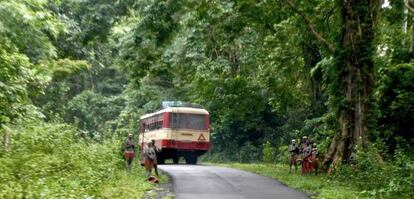
Sophie Grig, lleva casi dos décadas trabajando en la zona con esta organización, explica que los riesgos del contacto con los indígenas son variados. El principal, en su opinión, es el de la salud, ya que carecen de defensas para muchas enfermedades comunes y pueden incluso morir si las contraen a través del contacto con turistas. “Desde hace unos años se ha restringido la comunicación con ellos, las autoridades controlan de alguna forma que no suceda, antes era más frecuente”, explica Grig. Los carteles que prohíben fotografiarlos o darles de comer son una muestra de estas precauciones, pero a la vez “animalizan a estas personas”, se queja. “La solución no es prohibir a los viajeros que les fotografíen, sino vetar el paso”, recuerda.
El documental Safari Humano, del grupo de medios VICE , muestra cómo los turistas que atraviesan la carretera cuentan con orgullo a cuántos indígenas han localizado: “He visto uno”. “He visto cinco”. “Iban desnudos y llevaban taparrabos”. Y hay casos más extremos que llegan incluso a los abusos sexuales , según denunció el diario británico The Observer. Grig cuenta que la sensibilización de las personas que viajan es fundamental. Se ha avanzado mucho. Hasta hace unos años, los operadores turísticos promocionaban directamente estos safaris. "Con la presión que hemos hecho, ahora sucede bajo cuerda, no se anuncian, pero sigue siendo un atractivo turístico", asegura. La explicación que encuentra a esta falta de sensibilidad es que algunos turistas los deshumanizan al considerarlos seres primitivos. "Queremos cambiar prejuicios. Son personas que ha elegido vivir a sí, son felices", recalca. Survival recoge firmas para que en menos de un año no exista este fenómeno en las islas Andamán .
A la vez, la organización intenta evitar que los safaris humanos se reproduzcan en otras partes del mundo. En el caso de los mashco-piro, una tribu no contactada de Perú. Rebecca Spooner asegura que la situación allí no es tan extrema como en India, pero que tiene constancia de que numerosos turistas acuden allí atraídos por la presencia de estos indígenas. En este caso, se pueden avistar en barcas, durante una travesía en río que pasa por la zona donde viven. "En un principio nosotros incluso trabajamos por difundir imágenes de esta población, ya que el Gobierno peruano negaba su existencia para poder sacar beneficios económicos del territorio. Pero una vez probada, el contacto debe restringirse al mínimo" , explica.
La forma de acercarse a indígenas no contactados es complicada. La tesis de las organizaciones proindígenas es, en general, dejar que sean ellas las que se acerquen si quieren. Todas las que hay por el planeta son conscientes de que existe un mundo distinto más allá del suyo y son muchas las que de una u otra forma se han integrado en él. Lo contrario puede ser peligroso, ya que se pueden sentir agredidas e incluso atacar. Una de las pocas personas que tenía contacto con los mashco-piro, Nicolás Shaco Flores fue hallado muerto atravesado por una flecha en 2012, después de años aportándoles comida y regalos. Las circunstancias en las que sucedió no están claras. Su amigo el antropólogo Glenn Shepard, aseguró que el suceso confirma el deseo de la tribu por vivir sin contacto con el exterior.
Spooner recalca que, en cualquier caso, si hay acercamientos, deben ser por parte de profesionales especializados, nunca de turistas: “Y jamás tratarlos como si fueran animales”.
Sobre la firma
Más información, hagamos (in)felices a los jarawa, archivado en.
- Asia meridional
- Latinoamérica
- Problemas sociales
- Planeta Futuro
- Cursos online
- Idiomas online
- Crucigramas & Juegos
- Colecciones

- Francés online
- Inglés online
- Italiano online
- Alemán online

Time ticking for India’s Jarawa tribe
The Jarawa tribe in India’s Andaman islands face extinction as poaching and tourism threaten their survival.

Port Blair – At 120km north of capital Port Blair in India’s archipelago of Andaman and Nicobar, Baratang is an important point of transit for travellers looking to cross shallow stretches of sea that separate towns of middle and North Andaman.
In the last 10 years, Baratang has also become popular among tourists for its active mud volcanoes and beautiful limestone caves spread across narrow waterways around the island.
But often it’s the lure of meeting the “Jarawa” that brings thousands of Indian and foreign tourists every year to the area.
Till a decade ago the name “Jarawa” evoked only fear. The bow and arrow-wielding tribesmen were known to be extremely hostile to outsiders. The Jarawas would also occasionally attack settlements adjoining their habitation.
Considered one of the most isolated people on earth, the Jarawa are a hunter-gatherer tribe that has lived in the dense forests of Andaman Islands completely cut off from the outside world for thousands of years. But things are changing fast as modern influences creep in.
No more hostile
For starters the Jarawas are no longer hostile to outsiders and have begun shunning their traditional way of life for perks that come from being a tourist attraction. According to eyewitness accounts, the tribesmen who have for generations survived on hunting and fishing now often ask for food and tobacco from tourists passing through their reserve forests.
Also, many of the Jarawas who could only speak their native tongue are now fluent in Hindi, the language spoken by north Indians, many of whom have settled there.
But conservationists are watching these changes with alarm.
“It is a well known fact that tobacco and outside food which the tribe is not used to has been introduced by tourists and settlers,” said Denis Giles, a Port Blair based rights activist.
“There was a recent incident when two Jarawa tribesmen got into a physical fight with each other before hundreds of onlookers under the influence of alcohol. This is simply unbelievable because there is no history of alcohol consumption among the Jarawa,” Giles told Al Jazeera.
According to experts, one of the key reasons for the changes in Jarawa lifestyle has been the construction of the Andaman Trunk Road (ATR), a two-lane highway that connects parts of Middle and South Andaman and passes through the heart of Jarawa territory.
Though the Indian government has never formally allowed outside contact with the Jarawas, critics argue that construction of the trunk road has led to free mixing with the tribe, often with disastrous consequences.
“There are instances of Measles and Malaria outbreak among the Jarawa as a result of frequent contact with outsiders and it could well be the beginning of the end for the tribe,” Giles said.
“Imagine what happens if a deadly epidemic breaks out among them then the entire race will be simply wiped out,” he said.
Court ban on tourism
Taking cognizance of the situation, India’s Supreme Court has banned all tourism activity around the Jarawa territory and has ordered the creation of a buffer zone with a radius of five km around the Jarawa reserve where no commercial activity can take place.
In addition, the apex court in its judgment in earlier this year also directed the local administration to restrict the number of visitors travelling through the trunk road and also strictly monitor and prevent any tourism activity related to the Jarawas. The Andaman administration in its 2004 Jarawa policy has called for maximum autonomy and minimum interference for the tribe.
But such measures may have come a little too late and experts argue that the damage is irreversible already even as questions remain on the efficacy of hastily implemented protective measures.
“The Andaman administration policy implementation pursuant to the Supreme Court judgment should be implemented keeping all the stakeholders in loop. Stakeholders, such as local settlers, fishermen and activists.” said environmentalist Amlan Dutta, who has followed the developments closely.
Significantly, those advocating isolation for Jarawas maintain that the only way to protect the them is by closing the Andaman Trunk Road altogether, which would immediately stop the human safaris and interaction with outsiders.
But such a move has met with stiff resistance from the local people for whom the trunk road is the only option to access remote parts of North and Middle Andaman on land.
“Any decision to close down the ATR will have serious fallouts for settlers,” said Paritosh Halder, who runs a grocery store in the town of Rangat in Middle Andaman.
“Thousands will be deprived of livelihood and quick access to emergency services which are only available in Port Blair,” he said.
Other threats
But even as debate rages on the future of the trunk road, the Jarawas continue to face other threats.
In 2011, a Jarawa youth was allegedly attacked and seriously injured by poachers from neighbouring Myanmar who often illegally cross the international maritime border to smuggle timber and wildlife from Andaman Islands. There have been similar reports of attacks on Jarawas in the past.
Jarawa rights activists also allege that while the foreign poachers are often dealt with seriously by Indian law enforcement officials, the local poaching activity often goes unpunished which has resulted in serious depletion of food reserves of the Jarawas who are solely dependent on the forest for their survival.
“Poaching, both foreign and local, remain rife, despite stringent regulations and long prison sentences for those found guilty,” said Sophie Grig, Senior Campaigner of Survival International , an international human rights advocacy group.
“Local poachers in particular are often not prosecuted. Without the animals the Jarawa will not be able to survive. For tribal people to be able to continue to thrive it is essential that they are secure in their land and able to choose and control who comes into their territory,” she said.
But above all, the larger debate remains whether the Jarawas, who are often referred to as primitive and pre-historic people should be allowed to choose for themselves.
“The question is whether the Jarawas can make an informed decision now,” said Dutta.
“I feel the best way forward is to let them be and not push them into joining the mainstream,” he said.
The Great Andamanese
Incidentally, the Jarawas are not the only indigenous group facing a challenge to their existence. The Andaman and Nicobar islands are home to five different indigenous groups and the example of the “Great Andamanese” is often cited when it comes to deciding a future course for the Jarawas.
Once the most numerous of the five major indigenous groups in the Andaman Islands with an estimated population of 6,000, only 52 members of the Great Andamanese tribe survive today. Already, their tribal and linguistic distinctions have disappeared owing to interracial breeding.
According to latest estimates there are about 400 members of the Jarawa tribe currently and time could be running out fast for them. If unprotected, the Jarawas too could go the Great Andamanese way.

Embarking on a transformative journey through six chapters, we traverse India's landscape, exploring pioneering startups and their revolutionary...
- Sustainability
- Agriculture
- Brand Campaigns
- Watch inspiring videos
- Advertise With Us
- Press Coverage
Follow Us On
Download App
Is This Andaman Tribe in a Tourist Zoo? Time to Wake up and End This ‘Safari’!
The Jarawa have been occupying the Andaman rainforests for years.
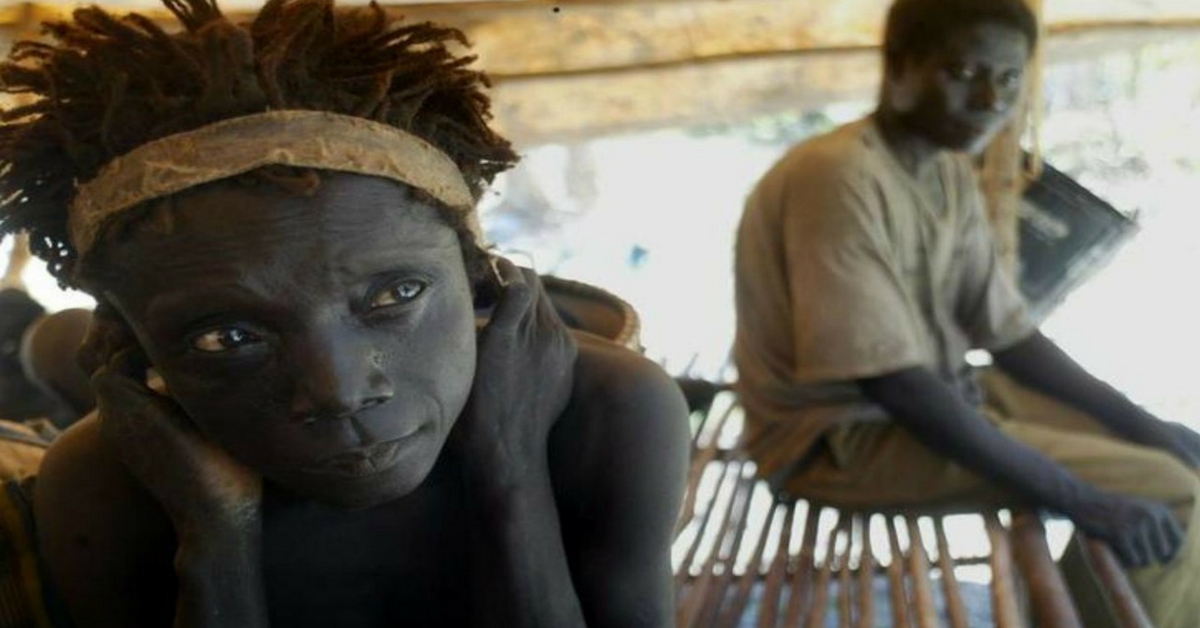
I magine you wake up and start going about your normal day. Your better half prepares breakfast for your children, and you get dressed for the office. As you open the door to leave to work, you spot a bus packed with tourists parked right on the street where you live.
People are pointing at you from the bus, exclaiming excitedly. As your children emerge from the house to go to school, the tourists in the bus throw bananas at them. And as if all at once, the tourists start taking out cameras, with intrusive flashes – taking photos of your every move.
Would you feel violated and insecure? What if you were trying to go to work, and a bus stopped, and its occupants started making faces at you while throwing bits of food hoping you catch them. Would you feel like a lesser being?
The bus full of tourists, like the hundreds before it and the hundreds after it, represents the continuous breach of privacy of one of India’s oldest indigenous people.
The shameful concept of the Human Safari:-

Every now and then, bus-loads of tourists descend upon the quiet Andaman island. Talking in animated voices, they have come for the chief attraction. “People of the jungle”, the “wild tribes”, and other exaggerated adjectives have been used by wily tour operators, to sell this chief attraction – sightings of the Jarawa tribe.
The tourists are instructed not to throw food or clothes at the tribals, or try and establish contact. But it is perfectly okay to point, first with fingers and then a camera. The tribals, who had been promised safety by the Government, are being sold as the chief attraction of a holiday package.
Genteel folks from urban jungles are surprised to see their hunter-gatherer counterparts. They are shocked at their often primitive ways. What these city folks don’t understand, is that most of mankind descended from people who used these primitive ways. In fact, if anything, the tribes are closest to what man used to be like. Hunting and gathering, instead of sitting in an air-conditioned cabin.
But, of course, we are more civilised. Civilised enough, to hawk the island home of a tribal populace as a tourist attraction. And organise hundreds of buses and trucks to ply on the arterial road that goes straight through the Jarawa reserve.
Who are the Jarawa?
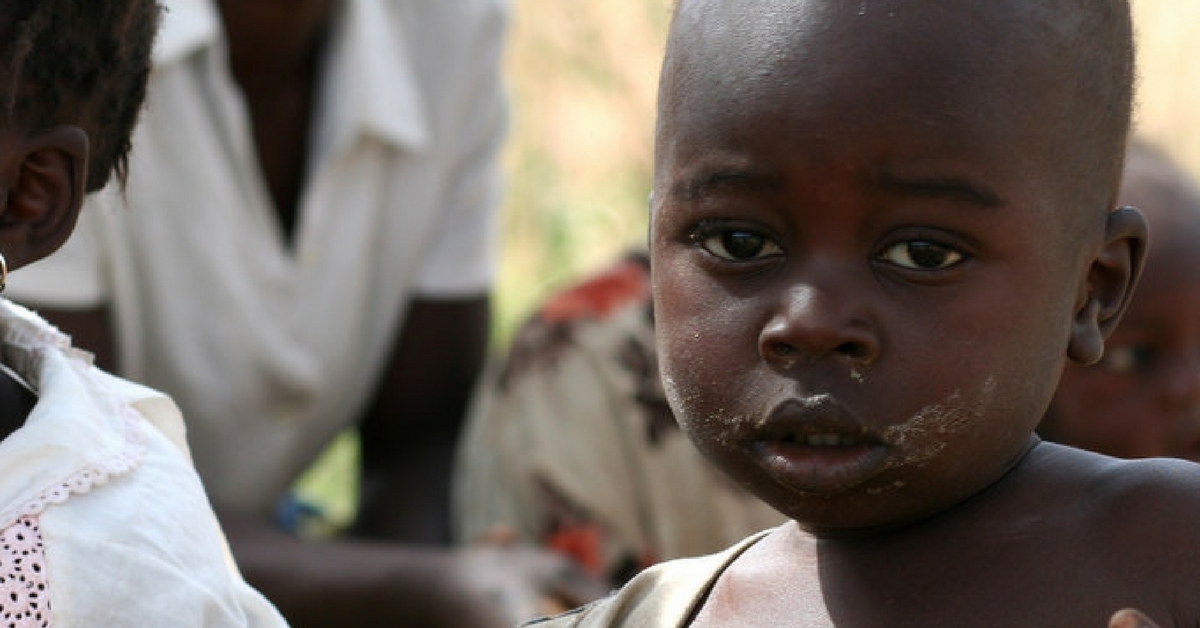
The tribe belongs to the Negrito group of tribal communities, including the Onge, the Great Andamanese and the Sentinelese living on the Andaman islands. Traditionally hunter-gatherers, they have lived and flourished in the rainforests of the islands for about 20,000 years.
However, they are fast disappearing. From a population of 5000, 150 years ago, they number just around 250-300. The total population of the Andaman and Nicobar islands is around four lakh. The disparity speaks for itself.
There has been tremendous pressure over the years on these tribes just to survive. The reasons are manifold and include deforestation which erodes their habitats and settlements. The equation between the Jarawas and the outside world has changed.
The indigenous people don’t trust the mainstream. And why should they? It is the civilised man, responsible for the Andaman Grand Trunk Road-that rips straight through prime Jarawa territory. According to Samir Acharya of the Society for Andaman and Nicobar Ecology, closing the ATR would stop the interaction between Jarawas and settlers.
The Jarawas, like all indigenous people, are fiercely protective of their turf. From as early as the 1960s, they opposed the construction of the ATR, resorting to hostility and attacking workers. In 1976, work was temporarily stalled. However, it resumed soon, and the Jarawas paid the price.
Their thick forest became accessible to the outside world. Settlers increased in number, trees were being felled, and poaching rose considerably, threatening the delicate ecosystem of the tribe. The developmental authorities turned a deaf ear to the protests of environmentalists, anthropologists and the Jarawas themselves. Today, the road carries traffic right through the heart of the Jarawa reserve. Further cause for concern for them.
The biggest and most underrated risk that the tribal population faces from the outside world is disease. Contact with outsiders has brought disease to this otherwise insular community.
In 1990, when a measles epidemic hit, around 60% of them were infected. The ATR provides the outside world with an intimate experience in the Jarawa heartland. The food the tourists offer the Jarawas contains sugar, artificial preservatives and saturated fat-something their systems cannot adjust to.
This significant change in diet can alter their metabolism, exposing them to urban ailments like diabetes and heart ailments.
Settlers and tourists also come with a multitude of vices. Thanks to them, the Jarawas have been exposed to alcohol, gutkha and tobacco. This, amongst other things, has led to sexual exploitation of the indigenous population’s women.
A shocking video emerged, in which a policeman was instructing a group of tribal women to dance for his and the tourist’s entertainment. The policeman commanded, and the girls obeyed. The video was met with rage around the world.

The exploitation of indigenous people had come to the forefront.
It was an avalanche of embarrassment that followed. The Indian Government promised to make amends and promised to protect the tribes from exploitation from the outside world-something that hasn’t happened yet.
Even today, at the crack of dawn, buses and jeeps line up outside, preparing to enter the Jarawa reserve to get a glimpse of the tribe members.
The Jarawa are one of the earliest inhabitants of the beautiful Andaman Islands. Nomadic, they hunt what they eat and even collect fruits and tubers. They are hostile towards outsiders, with good reason.
These people live off the land, leaving a zero carbon footprint, yet are regarded “primitive” and “exotic”, with tour operators bribing cops to take customers to meet the indigenous people.
The Jarawa belong to the island and are a vital part of the forest’s ecosystem. We are only recent invaders into their space. They’ve been around for ages.
You may also like:- This Indian Island Is Home to the World’s Last Isolated Humans
Indigenous people are legitimate humans, with thoughts and feelings just like you and me. It is time to stop treating them like animals and maybe taking steps to ensure their identity remains preserved.
Like this story? Or have something to share? Write to us: [email protected] , or connect with us on Facebook and Twitter . NEW: Click here to get positive news on WhatsApp!
If you found our stories insightful, informative, or even just enjoyable, we invite you to consider making a voluntary payment to support the work we do at The Better India. Your contribution helps us continue producing quality content that educates, inspires, and drives positive change.
Choose one of the payment options below for your contribution-
By paying for the stories you value, you directly contribute to sustaining our efforts focused on making a difference in the world. Together, let’s ensure that impactful stories continue to be told and shared, enriching lives and communities alike.
Thank you for your support. Here are some frequently asked questions you might find helpful to know why you are contributing?

Sounds Interesting? Share it now!
This story made me
Tell Us More

- Economy & Markets
- Digital Life

Andaman's Jarawa Tribe Population Rising; Human Safaris Continuing Despite Ban

Amid the recent controversies relating to the exploitation of the endangered Jarawa tribes in the Andaman Islands of India, there is something to cheer about as the government has said that the population of the tribe has increased to 407.
In a written statement to the Indian parliament Friday, Minister of State for Tribal Affairs Shri Mahadeo Singh Khandela said, "The present population of endangered Jarawa tribe is 407... and there is no intervention in cultural life of the Jarawas and they are left to develop according to their own genius and at their own pace."
It is good news that the population of the tribe has gone up from 383 in 2011 to 407 and the number of children below the age of 10 is on the rise.
The Jarawas, the original inhabitants of the Andaman and Nicobar Islands, are on the verge of extinction as their number was seen decreasing in the past decade. The indigenous people, who live in the lush forests of the island, are not much exposed to the mainstream society and still live by hunting and continue with their traditional way of life.
However, this does not wipe away the concerns over the security of the tribe as the recent media reports say that the controversial human safaris in the Andaman Islands are continuing unabated despite a ban.
There was an international outrage when a video clipping that showed the commercial exploitation of the Jarawa tribes to promote tourism appeared in the media in January last. The video clips showed some Jarawa women dancing half naked in front of the tourists in return for food.
The human safaris conducted with the support of the local authorities violate the rules and allow the tourists to see and interact with the tribe, endangering their existence.
The Indian government banned the human safaris following the outcry against it from different corners and ordered a probe into the issue. The Supreme Court of India banned any kind of tourism activity near their habitat.
However, the latest media reports show that the human safari has resumed as the local administration has bowed down to the lobbying from the tourism industry. The safari, using the Andaman Trunk Road that cuts through the heartland of the Jarawa habitat, is increasing day by day, according to the latest reports.
Jarawas: Tourism Pushing Andaman Aborigines to Tipping Point
© Copyright IBTimes 2024. All rights reserved.
Microsoft Expands Its AI Empire Abroad

Oil: 'Mother Of Corruption' In Venezuela

'Extreme' Climate Blamed For World's Worst Wine Harvest In 62 Years

Macron Warns 'Mortal' Europe Needs Credible Defence

Bitcoin And Crypto Price Review - Another Myth Gets Busted?

Mass Cancellations Loom Despite French Air Union Cancelling Strike

Mired In Crisis, Boeing Reports Another Loss

Recycled 'Zombie' Misinformation Targets US Voters

Hackers Leak Part Of Source Code Of El Salvador's Bitcoin Wallet

Azerbaijan Says 'Closer Than Ever' To Armenia Peace Deal Amid Border Talks

Los jarawas
Involúcrate hazte socio/a o dona, “safaris humanos” para ver a los jarawas.
Aunque el Tribunal Supremo de la India ordenó en 2002 el cierre de la carretera que atraviesa la reserva de los jarawas, a fecha de hoy sigue abierta y los turistas la recorren como parte de los safaris humanos que se organizan para ver a este pueblo indígena.
Los cazadores furtivos entran en la selva de los jarawas y roban los animales de los que depende este pueblo indígena para su supervivencia. También han introducido alcohol y marihuana y se sabe que han abusado sexualmente de mujeres jarawas.
En 1999 y 2006 los jarawas padecieron brotes de sarampión, una enfermedad que ha provocado la extinción de muchos pueblos indígenas en todo el mundo tras entrar en contacto con foráneos.
URGENTE : por favor, envía un email al Gobierno indio para pedirle que ponga fin a los “safaris humanos” inmediatamente

Se cree que los pueblos indígenas de los jarawas, los granandamaneses, los onges y los sentineleses llevan viviendo en el océano Índico desde hace 55.000 años.
Ahora son superados ampliamente en número por los cientos de miles de colonos indios que se han asentado en las islas Andamán en las últimas décadas.
Hoy en día, aproximadamente 400 miembros del pueblo indígena nómada jarawa viven en grupos de 40 a 50 personas en chaddhas , que es como llaman a sus casas.
Como la mayoría de los pueblos indígenas que viven de forma autosuficiente y en sus tierras ancestrales, los jarawas continúan prosperando y su población se incrementa de forma estable.
Los jarawas cazan cerdos y tortugas, y pescan con arcos y flechas en los arrecifes coralinos cangrejos y peces, incluido el panga, las anguilas y los Leiognathidae dentados. También recolectan frutas, raíces silvestres, tubérculos y miel. Los arcos están hechos de madera de chooi , que no crece en el territorio jarawa. Usualmente deben hacer un viaje de larga distancia hasta la isla Baratang para recolectarla.
Tanto hombres como mujeres jarawas recolectan miel silvestre en árboles de gran altura. Durante la recolección de miel los miembros del grupo cantan canciones para expresar su regocijo. Los recolectores mastican la savia que obtienen de las hojas de plantas repelentes, como la ooyekwalin , que luego rocían con sus bocas a las abejas para mantenerlas alejadas. Una vez que las abejas se van, los jarawas pueden cortar su nido y lo colocan en un cesto de madera que cargan a sus espaldas. Los jarawas siempre se dan un baño después de comer miel.

Un estudio de su nutrición y salud reveló que sus “niveles nutricionales” eran “óptimos”. Tienen un conocimiento detallado de más de 150 plantas y 350 especies animales.
Los jarawas de las islas Andamán disfrutan de una era de opulencia. Sus selvas les dan más de lo que necesitan.
En 1998, algunos jarawas empezaron a salir de la selva por primera vez sin sus arcos y flechas para visitar poblaciones y asentamientos cercanos.
En 1990 las autoridades locales anunciaron sus “planes” de sedentarizar a largo plazo a los jarawas en dos comunidades basadas en una economía de pesca. Sugerían que la caza y la recolección quedaran como sus actividades “deportivas”. El plan era tan preceptivo que incluso detallaba qué estilo de ropa debían ponerse. La sedentarización forzosa ya fue mortal para otros pueblos indígenas de las islas Andamán, como siempre lo ha sido para la mayoría de los pueblos recién contactados en todo el mundo.
Yo soy civilizada y ellos no lo son.
Después de una enérgica campaña organizada por Survival y organizaciones locales, este proyecto de sedentarización fue finalmente abandonado. En 2004 las autoridades anunciaron una política nueva y radical: los jarawas podrían elegir su propio futuro y la intervención externa en sus vidas se reduciría al mínimo. Esto significó un enorme éxito para la campaña internacional y local.
No se deberán llevar a cabo intentos para incorporarlos a la sociedad mayoritaria.
¿A qué problemas se enfrentan las tribus de las islas Andamán?
De los cuatro pueblos indígenas de las islas Andamán, la situación de los jarawas es la más precaria.
Los jarawas se enfrentan a muchas amenazas:
La carretera que cruza su territorio atrae a miles de foráneos, turistas incluidos, a sus tierras. Los turistas tratan a los jarawas como a animales en un safari park.

- Los foráneos, tanto colonos locales como cazadores furtivos extranjeros, entran a su frondosa reserva de selva para robar la caza que este pueblo necesita para sobrevivir.
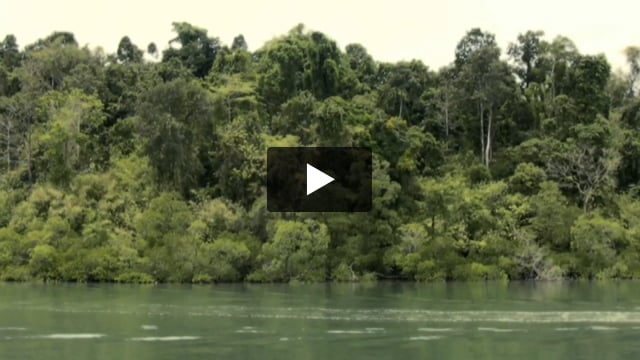
Cazadores furtivos
Los jarawas denuncian la invasión de sus tierras por parte de cazadores furtivos. Este grupo fue ...
Continúan siendo vulnerables a enfermedades provenientes de fuera contra las que carecen de inmunidad. En 1999 y 2006, los jarawas sufrieron brotes de sarampión: una enfermedad que ha aniquilado a muchos pueblos indígenas alrededor del mundo tras el contacto con foráneos. Una epidemia podría destruirlos.
Las mujeres jarawas han sufrido abusos sexuales por parte de los furtivos, colonos, conductores de autobuses y otros.
Las chicas dicen que los hombres de fuera las presionan para que hagan muchas cosas. Las presionan con sus manos y las uñas de sus dedos, cuando las chicas se enfadan. Las persiguen bajo la influencia del alcohol. Tienen sexo con las chicas (…) Beben alcohol en las casas de ellas. También duermen en la casa de los jarawas. Fuman marihuana y después persiguen a las chicas.
Incluso por parte de los diputados de la isla hay presiones para que los jarawas sean integrados a la sociedad “mayoritaria” de la India.
El destino de los granandamaneses y los onges son una clara advertencia de lo que podría ocurrirles a los jarawas, a menos que se reconozca su derecho a controlar quién entra en su tierra y a tomar sus propias decisiones sobre el estilo de vida que quieran llevar.
Intentos de integrar a los jarawas a la sociedad “mayoritaria”
En la India, integrar a la sociedad “mayoritaria” hace referencia a la política de forzar a una tribu a integrarse en la sociedad dominante del país. Tiene efectos devastadores en los pueblos indígenas. Los despoja de su autosuficiencia y sentido de identidad y les deja marginados de la sociedad enfrentándose a muchos problemas. Las tasas de enfermedad, depresión, adicción y suicidio en la comunidad indígena se disparan de manera casi inevitable.
En 2010 el diputado de las islas Andamán exigió “la adopción de medidas rápidas y drásticas para adaptar a los jarawas a las características básicas de la sociedad mayoritaria” y enviar a los niños a internados para que fueran “destetados” lejos de su pueblo. Dijo de los jarawas que se encontraban “en una etapa primitiva de desarrollo” y que “estaban atrapados en un tiempo entre la Edad de piedra y la del hierro”.
Personajes influyentes de la India, incluidos ministros del Gobierno, han pedido a menudo que los jarawas fuesen integrados, al considerarlos “atrasados” o “primitivos”. Esta petición, sin embargo, no ha partido de los jarawas, quienes no muestran signo alguno de querer abandonar su vida en la selva.
Los foráneos son hombres malos. Abusan de nosotros. Prefiero quedarme en la selva.
Una actitud como esta puede provenir del desprecio racista o de una preocupación real por el bienestar del pueblo indígena; en cualquier caso se basa siempre en una mala interpretación de la excelente calidad de vida actual de los jarawas, y de las experiencias miserables de los pueblos indígenas que han sido asimilados a la fuerza.
Desde 2004, la política del Gobierno indio en relación con los jarawas ha sido muy positiva: el principio general es que el propio pueblo indígena debe controlar su futuro, con una mínima intervención del estado. Sin embargo, aún hay muchos que piden que esto cambie.
¿Cuál es la postura de Survival frente a la integración a la sociedad “mayoritaria”?
Survival no defiende ni el aislamiento ni la integración y considera, al igual que todos los pueblos indígenas, que son ellos quienes están en mejor posición para decidir qué cambios, de haberlos, quieren llevar a cabo en sus vidas. Para disponer del tiempo y el espacio necesarios para tomar estas decisiones es crucial que sus tierras estén protegidas frente a incursiones externas.
Invasión de tierras y caza furtiva
La principal amenaza para la existencia de los jarawas proviene de la invasión de sus tierras, que fue provocada por la construcción en los años 70 de la carretera que atraviesa su selva. Esta carretera, la Andaman Trunk Road ( ATR ), atrae a foráneos al corazón de su territorio.
La ATR ha propiciado además los “safaris humanos”, donde los turoperadores llevan a turistas por la carretera con la esperanza de “avistar” a miembros de la tribu.
La caza, pesca y recolección ilegales, a manos de furtivos locales y extranjeros, sigue constituyendo una importante amenaza para la supervivencia de los jarawas.
El robo de la comida de la que dependen pone en riesgo su autosuficiencia y podría llevar al pueblo a su extinción.
¿Cuál es la postura de Survival frente a la invasión de tierras y la caza furtiva?
Desde 1993 Survival ha presionado al Gobierno indio para que cierre la carretera Andaman Trunk Road, considerando que solo los jarawas deberían decidir si los foráneos pueden atravesar sus tierras, cuándo y dónde.

En 2002, el Tribunal Supremo de la India ordenó el cierre de la carretera, pero aún sigue abierta.
En 2013, tras una campaña de Survival y la organización local Search para prohibir los “safaris humanos”, el Tribunal Supremo prohibió a los turistas viajar por la carretera durante siete semanas. Después de que las autoridades de Andamán cambiaran sus propias normas con el fin de permitir que continuasen los safaris humanos, el Tribunal Supremo no tuvo otra opción que retirar la prohibición.
En octubre de 2017, las autoridades de Andamán abrieron una ruta marítima alternativa a Baratang. Esta ruta supuestamente detendría los safaris humanos. Pero a pesar del compromiso de las autoridades a garantizar que todos los turistas tendrían que utilizar la nueva ruta, apenas se ha hecho nada en este sentido, y la comercialización de safaris humanos a través de la carretera sigue proliferando.
Asimismo, Survival viene exigiendo que las autoridades de Andamán frenen la caza furtiva y aseguren que los arrestados son procesados: aunque en los últimos años muchos cazadores furtivos han sido detenidos, ninguno ha sido sentenciado por un tribunal a pesar de que el delito está castigado con penas de hasta siete años de prisión.
Actúa ahora para ayudar a Los jarawas
La campaña de Survival en las Andamán se centra en los jarawas porque, de los cuatro pueblos indígenas que habitan en las islas, son los que se encuentran en la situación de mayor precariedad. Tu apoyo es fundamental para evitar la aniquilación de los pueblos indígenas no contactados.
- Por favor, firma esta petición .
- Haz un donativo a Survival.
- Si quieres implicarte más, ponte en contacto con Survival .
Recibe nuestros emails
Para estar al día de nuestras campañas y enterarte qué puedes hacer para defender los derechos indígenas. Nuestras acciones urgentes por email son una parte fundamental de nuestras campañas y nos ayudan a ganar batallas, así que apúntate.
Noticias relacionadas Los jarawas

Indignación por la comercialización de “safaris humanos” por operadores turísticos en India
Pese a la nueva “ruta marítima alternativa”, el gobierno de Andamán no acaba con el turismo de explotación tribal degradante.

Se avecina el fin de los infames safaris humanos en la India
Tras el boicot turístico de Survival, el turismo que daña a los jarawas podría llegar pronto a su fin.

India incumple el plazo para poner fin a los “safaris humanos” en las islas Andamán
Las autoridades de las islas Andamán fracasaron en detener los "safaris humanos" que afectan a los vulnerables jarawas.


Proyectos de construcción en la carretera de los “safaris humanos” suscitan temores por una tribu
Survival condena los planes de construir puentes y ampliar la carretera Andaman Trunk Road

Survival condena promesas electorales retrógradas sobre la tribu jarawa
Las promesas incluyen integrar a los jarawas a la sociedad mayoritaria y eliminar la zona protectora alrededor de su reserva.
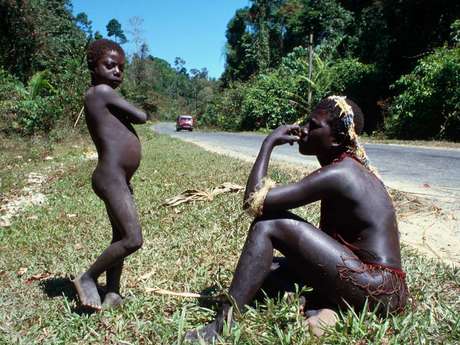
Un año de cuenta atrás para acabar con los “safaris humanos”
Las autoridades de las Andamán se han comprometido a poner en marcha una ruta alternativa para marzo de 2015.
The Life And Times Of Judge Roy Bean
This machine kills fascists, jarawas, zoológicos humanos y hombres elefantes: del ser humano como atracción de feria.

Esto nos lleva a abrir plano y, a través del documental «Zoológicos humanos» volver al momento en que se pusieron de moda las llamadas ‘exposiciones etnológicas’ o más bien zoológicos humanos que se dieron en la ensoberbecida Europa colonialista desde 1870 hasta las primeras décadas del siglo XX e incluso la imagen de al lado fue tomada en Bruselas en 1958, con una señora muy civilizada ofreciendo un plátano a una niña del Congo. Pueblos de los más lejanos rincones del mundo eran normalmente arrancados de sus tierras mediante engaños o a la fuerza y exhibidos como animales (muchas veces en los propios zoos) en actos supremacistas y racistas que excitaban de exotismo la curiosidad de la gente. Estas personas fueron expuestas no sólo a la mirada morbosa de los europeos, sino que también, sometidos a distintos tipos de abuso físico y sicológico, ocasionando la muerte de la mayoría de éstos en tierras totalmente ajenas a sus vidas, tradiciones y condiciones materiales y espirituales.

Patricia Esteban Erlés

Comparte esto:
Deja un comentario cancelar la respuesta.
- Comentarios

- ¿Ya tienes una cuenta de WordPress.com? Inicia sesión .
- Personalizar
- Suscribirse Suscrito
- Iniciar sesión
- Copiar enlace corto
- Denunciar este contenido
- View post in Reader
- Gestionar las suscripciones
- Contraer esta barra
- Developing Stories
- Creative Series
- Press releases
- Signup for our newsletter Our Editors' Best Picks Send I hereby confirm that I wish to receive FairPlanet's newsletter. I have read, understood and confirm FairPlanet's Privacy Policy . * .
Jarawa face year-round threat from ‘human safaris’ under new government plans
Currently the season runs from September to May, when thousands of tourists take the ‘human safaris’ every week as they drive through the tribe’s forest to ogle at the recently contacted Jarawa. But now the tribe will have to face this high level of intrusion all year round.
A local taxi driver said, ‘Some people go there to give them biscuits and take pictures … Just looking at them is a game, you know? This is like an entertainment.’
Mr C. G. Vijay from the Directorate of Information, Publicity and Tourism recently announced plans for the promotion of activities such as ‘forest safaris and hiking for promoting the Islands as all-season destinations’ at tourism fairs in India and abroad.
The announcement has caused alarm amongst those concerned for the hunter-gatherer Jarawa tribe.
Survival Director Stephen Corry said today, ‘Before the Andaman authorities starts to market the islands as a year-round tourist destination it should first get its house in order. ‘Human safaris’ into the Jarawa’s forest are an affront to human dignity – the idea that the Jarawa will not even have respite from this intrusion into their lives during the rainy season, doesn’t bear thinking about’.
Thousands have pledged not to visit the Andaman Islands since Survival International launched a boycott earlier this year, calling for visitors to stay away until tourists are banned from the road through the Jarawa’s forest and an alternative sea route is put in place.
The Andaman administration has committed to opening up an alternative sea route by March 2015, but even this lamentably late date is looking questionable as the plans are still awaiting environmental clearance from Delhi.
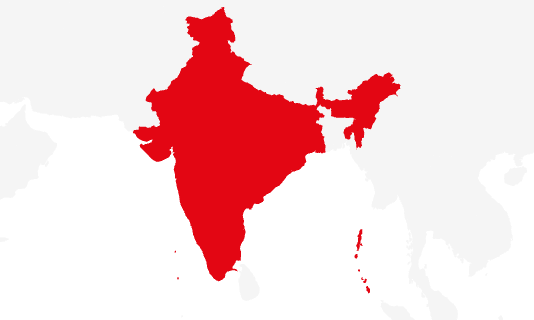
- Editors’ Picks
- Editors’ Voices
- The Beam Magazine
- FairPlanet Media Advertising Kit
- FairPlanet Media Services
- FairPlanet Social Enterprise
- Sustainable Development Goals
- Universal Declaration of Human Rights
- Our Coverage
- Editors´ picks
- Authors Network

- Editorial Policy
- Equality and Diversity
- Terms & Conditions
- Privacy Policy
- © 2024 FairPlanet
- All rights reserved

By copying the embed code below, you agree to adhere to our republishing guidelines .

Turn Your Curiosity Into Discovery
Latest facts.
12 Facts About Beer Pong Day May 4th
15 Facts About National Gummi Bear Day April 27th
40 facts about elektrostal.
Written by Lanette Mayes
Modified & Updated: 02 Mar 2024
Reviewed by Jessica Corbett

Elektrostal is a vibrant city located in the Moscow Oblast region of Russia. With a rich history, stunning architecture, and a thriving community, Elektrostal is a city that has much to offer. Whether you are a history buff, nature enthusiast, or simply curious about different cultures, Elektrostal is sure to captivate you.
This article will provide you with 40 fascinating facts about Elektrostal, giving you a better understanding of why this city is worth exploring. From its origins as an industrial hub to its modern-day charm, we will delve into the various aspects that make Elektrostal a unique and must-visit destination.
So, join us as we uncover the hidden treasures of Elektrostal and discover what makes this city a true gem in the heart of Russia.
Key Takeaways:
- Elektrostal, known as the “Motor City of Russia,” is a vibrant and growing city with a rich industrial history, offering diverse cultural experiences and a strong commitment to environmental sustainability.
- With its convenient location near Moscow, Elektrostal provides a picturesque landscape, vibrant nightlife, and a range of recreational activities, making it an ideal destination for residents and visitors alike.
Known as the “Motor City of Russia.”
Elektrostal, a city located in the Moscow Oblast region of Russia, earned the nickname “Motor City” due to its significant involvement in the automotive industry.
Home to the Elektrostal Metallurgical Plant.
Elektrostal is renowned for its metallurgical plant, which has been producing high-quality steel and alloys since its establishment in 1916.
Boasts a rich industrial heritage.
Elektrostal has a long history of industrial development, contributing to the growth and progress of the region.
Founded in 1916.
The city of Elektrostal was founded in 1916 as a result of the construction of the Elektrostal Metallurgical Plant.
Located approximately 50 kilometers east of Moscow.
Elektrostal is situated in close proximity to the Russian capital, making it easily accessible for both residents and visitors.
Known for its vibrant cultural scene.
Elektrostal is home to several cultural institutions, including museums, theaters, and art galleries that showcase the city’s rich artistic heritage.
A popular destination for nature lovers.
Surrounded by picturesque landscapes and forests, Elektrostal offers ample opportunities for outdoor activities such as hiking, camping, and birdwatching.
Hosts the annual Elektrostal City Day celebrations.
Every year, Elektrostal organizes festive events and activities to celebrate its founding, bringing together residents and visitors in a spirit of unity and joy.
Has a population of approximately 160,000 people.
Elektrostal is home to a diverse and vibrant community of around 160,000 residents, contributing to its dynamic atmosphere.
Boasts excellent education facilities.
The city is known for its well-established educational institutions, providing quality education to students of all ages.
A center for scientific research and innovation.
Elektrostal serves as an important hub for scientific research, particularly in the fields of metallurgy, materials science, and engineering.
Surrounded by picturesque lakes.
The city is blessed with numerous beautiful lakes, offering scenic views and recreational opportunities for locals and visitors alike.
Well-connected transportation system.
Elektrostal benefits from an efficient transportation network, including highways, railways, and public transportation options, ensuring convenient travel within and beyond the city.
Famous for its traditional Russian cuisine.
Food enthusiasts can indulge in authentic Russian dishes at numerous restaurants and cafes scattered throughout Elektrostal.
Home to notable architectural landmarks.
Elektrostal boasts impressive architecture, including the Church of the Transfiguration of the Lord and the Elektrostal Palace of Culture.
Offers a wide range of recreational facilities.
Residents and visitors can enjoy various recreational activities, such as sports complexes, swimming pools, and fitness centers, enhancing the overall quality of life.
Provides a high standard of healthcare.
Elektrostal is equipped with modern medical facilities, ensuring residents have access to quality healthcare services.
Home to the Elektrostal History Museum.
The Elektrostal History Museum showcases the city’s fascinating past through exhibitions and displays.
A hub for sports enthusiasts.
Elektrostal is passionate about sports, with numerous stadiums, arenas, and sports clubs offering opportunities for athletes and spectators.
Celebrates diverse cultural festivals.
Throughout the year, Elektrostal hosts a variety of cultural festivals, celebrating different ethnicities, traditions, and art forms.
Electric power played a significant role in its early development.
Elektrostal owes its name and initial growth to the establishment of electric power stations and the utilization of electricity in the industrial sector.
Boasts a thriving economy.
The city’s strong industrial base, coupled with its strategic location near Moscow, has contributed to Elektrostal’s prosperous economic status.
Houses the Elektrostal Drama Theater.
The Elektrostal Drama Theater is a cultural centerpiece, attracting theater enthusiasts from far and wide.
Popular destination for winter sports.
Elektrostal’s proximity to ski resorts and winter sport facilities makes it a favorite destination for skiing, snowboarding, and other winter activities.
Promotes environmental sustainability.
Elektrostal prioritizes environmental protection and sustainability, implementing initiatives to reduce pollution and preserve natural resources.
Home to renowned educational institutions.
Elektrostal is known for its prestigious schools and universities, offering a wide range of academic programs to students.
Committed to cultural preservation.
The city values its cultural heritage and takes active steps to preserve and promote traditional customs, crafts, and arts.
Hosts an annual International Film Festival.
The Elektrostal International Film Festival attracts filmmakers and cinema enthusiasts from around the world, showcasing a diverse range of films.
Encourages entrepreneurship and innovation.
Elektrostal supports aspiring entrepreneurs and fosters a culture of innovation, providing opportunities for startups and business development.
Offers a range of housing options.
Elektrostal provides diverse housing options, including apartments, houses, and residential complexes, catering to different lifestyles and budgets.
Home to notable sports teams.
Elektrostal is proud of its sports legacy, with several successful sports teams competing at regional and national levels.
Boasts a vibrant nightlife scene.
Residents and visitors can enjoy a lively nightlife in Elektrostal, with numerous bars, clubs, and entertainment venues.
Promotes cultural exchange and international relations.
Elektrostal actively engages in international partnerships, cultural exchanges, and diplomatic collaborations to foster global connections.
Surrounded by beautiful nature reserves.
Nearby nature reserves, such as the Barybino Forest and Luchinskoye Lake, offer opportunities for nature enthusiasts to explore and appreciate the region’s biodiversity.
Commemorates historical events.
The city pays tribute to significant historical events through memorials, monuments, and exhibitions, ensuring the preservation of collective memory.
Promotes sports and youth development.
Elektrostal invests in sports infrastructure and programs to encourage youth participation, health, and physical fitness.
Hosts annual cultural and artistic festivals.
Throughout the year, Elektrostal celebrates its cultural diversity through festivals dedicated to music, dance, art, and theater.
Provides a picturesque landscape for photography enthusiasts.
The city’s scenic beauty, architectural landmarks, and natural surroundings make it a paradise for photographers.
Connects to Moscow via a direct train line.
The convenient train connection between Elektrostal and Moscow makes commuting between the two cities effortless.
A city with a bright future.
Elektrostal continues to grow and develop, aiming to become a model city in terms of infrastructure, sustainability, and quality of life for its residents.
In conclusion, Elektrostal is a fascinating city with a rich history and a vibrant present. From its origins as a center of steel production to its modern-day status as a hub for education and industry, Elektrostal has plenty to offer both residents and visitors. With its beautiful parks, cultural attractions, and proximity to Moscow, there is no shortage of things to see and do in this dynamic city. Whether you’re interested in exploring its historical landmarks, enjoying outdoor activities, or immersing yourself in the local culture, Elektrostal has something for everyone. So, next time you find yourself in the Moscow region, don’t miss the opportunity to discover the hidden gems of Elektrostal.
Q: What is the population of Elektrostal?
A: As of the latest data, the population of Elektrostal is approximately XXXX.
Q: How far is Elektrostal from Moscow?
A: Elektrostal is located approximately XX kilometers away from Moscow.
Q: Are there any famous landmarks in Elektrostal?
A: Yes, Elektrostal is home to several notable landmarks, including XXXX and XXXX.
Q: What industries are prominent in Elektrostal?
A: Elektrostal is known for its steel production industry and is also a center for engineering and manufacturing.
Q: Are there any universities or educational institutions in Elektrostal?
A: Yes, Elektrostal is home to XXXX University and several other educational institutions.
Q: What are some popular outdoor activities in Elektrostal?
A: Elektrostal offers several outdoor activities, such as hiking, cycling, and picnicking in its beautiful parks.
Q: Is Elektrostal well-connected in terms of transportation?
A: Yes, Elektrostal has good transportation links, including trains and buses, making it easily accessible from nearby cities.
Q: Are there any annual events or festivals in Elektrostal?
A: Yes, Elektrostal hosts various events and festivals throughout the year, including XXXX and XXXX.
Was this page helpful?
Our commitment to delivering trustworthy and engaging content is at the heart of what we do. Each fact on our site is contributed by real users like you, bringing a wealth of diverse insights and information. To ensure the highest standards of accuracy and reliability, our dedicated editors meticulously review each submission. This process guarantees that the facts we share are not only fascinating but also credible. Trust in our commitment to quality and authenticity as you explore and learn with us.
Share this Fact:
You are using an outdated browser. Please upgrade your browser to improve your experience.
le premier mois sans engagement
- Opinions et débats
- Immigration
- Dossiers politique
- Dossiers famille et éducation
- Voir les dossiers France
- International
- Moyen-Orient
- Voir les dossiers International
- Catholicisme
- Catholicisme France
- Catholicisme Monde
- Le Collège des cardinaux
- La Documentation catholique
- Protestantisme
- Dossiers spiritualité
- Lexique religieux
- Voir les dossiers Religion
- Économie française
- Économie internationale
- Entreprises
- Média et presse
- Économie solidaire
- Voir les dossiers Économie
- Programme et critiques TV
- Art et expositions
- Livres et idées
- Voir les dossiers Culture
- COP28 2023 (Dubaï)
- Biodiversité
- Voir les dossiers Planète
- Alimentation et santé
- Écologie et santé
- Voir les dossiers Santé
- Art de vivre
- Recettes de cuisine
- Voir les dossiers Art de vivre
- Jeux Olympiques Paris 2024
- Voir les dossiers Sport
- Dernières infos AFP
- Newsletters
- Lire le Journal
- La Croix l’Hebdo
- Mots Croisés
- La Croix International
- Librairie La Croix
Minorités en danger, les Jarawas, objets de safaris humains
À travers le monde, de nombreuses minorités sont victimes de discrimination. Tour d’horizon de six d’entre elles.Dans les îles Andaman, en Inde, les Jarawas sont le symbole des menaces qui pèsent sur les peuples aborigènes.
- Vanessa Dougnac (en Inde) ,
- le 15/12/2017 à 13:59
réservé aux abonnés
Lecture en 1 min.

Le peuple jarawa est proche de l’extinction, avec moins de 400 individus.
Claire Beilivert

- Commenter Réagir
- Envoyer par mail Envoyer
- Partager sur Facebook Partager
- Partager sur Twitter Twitter

L’histoire des Jarawas remonte à la nuit des temps. Issu des premières migrations d’Afrique, ce peuple de Pygmées s’est établi dans les îles indiennes Andaman il y a plus de trente-cinq mille ans. L’isolement de l’archipel, aux confins du golfe du Bengale, les a longtemps protégés. Ce peuple de chasseurs-cueilleurs, qui comptait 8 000 individus à l’époque britannique, est aujourd’hui proche de l’extinction avec moins de 400 individus.
En vingt-cinq ans, les contacts avec cette tribu vulnérable se sont multipliés sous l’impact du développement et du tourisme. Pourtant, sur le papier, les lois sont strictes : interdiction de pénétrer dans leur réserve et d’entreprendre toute activité touristique ou commerciale. Introduit en 2012, un amendement à la loi de protection des tribus aborigènes punit les infractions d’amendes et de peines allant de trois à sept ans de prison.
Un peuple victime du voyeurisme des touristes
Mais le triste cortège des maux de la « civilisation » a trouvé son chemin vers les Jarawas : alcool, denrées, exploitation sexuelle des femmes, et maladies, comme la rougeole par le passé, qui peuvent ravager cette population sans immunité. Les braconniers, qui agissent parfois avec la complicité des gardes forestiers, s’introduisent dans leur réserve, mais aussi les safaris humains qui voient les interactions avec les Jarawas comme des trophées touristiques. Jusqu’aux journalistes qui prétendent vouloir alerter sur leur sort, la tentation du voyeurisme l’emporte.
L’autarcie des Jarawas a été perturbée dès les années 1990 par l’Andaman Trunk Road, une route qui traverse leur territoire, et ce malgré l’interdiction, en 2002, de la Cour suprême. Aujourd’hui, les autorités promettent de diriger la circulation vers une voie parallèle et, en octobre, elles ont également ouvert une route maritime alternative depuis la capitale de Port Blair.
« Cette liaison maritime était censée arrêter les safaris humains , a déclaré l’ONG Survival International. Mais, malgré les engagements des autorités à y diriger tous les touristes, ces safaris continuent à prospérer sur la route carrossable . »
Les Jarawas restent ainsi un symbole, en Inde, de la précarité des Adivasis, aborigènes qui regroupent 104 millions d’individus et dont les droits continuent à être bafoués.
Vous devez être connecté afin de pouvoir poster un commentaire
Déjà inscrit sur la Croix ?
Pas encore abonné ?

- Le journal papier et l’Hebdo en version numérique
- Les 3 newsletters quotidiennes « L’essentiel »
- Les newsletters thématiques
- L’accès aux archives

- Projet de loi fin de vie : à la Convention citoyenne, l’explication de texte du gouvernement
- Ouali, conducteur de car : « Je rêve d’être le chauffeur attitré de l’OM »
- La direction de Sciences Po Paris annonce un accord avec les manifestants propalestiniens
- Projet de loi fin de vie : Emmanuel Macron « rend compte » devant la convention citoyenne
- Sur les campus américains, le mouvement pro-Gaza « plus déterminé que jamais »
- La Corée du Sud veut offrir des funérailles dignes aux naufragés nord-coréens
- Soutien à Gaza : cent personnes interpellées dans une université de Boston
- Mexique : un deuxième débat attendu entre les deux candidates à la présidence
- Saint Pierre Chanel, missionnaire du bout du monde
- À Venise, le pape François promoteur d’un art au service des plus pauvres
- Tout un symbole : avec le geste de paix, convertir le voisin en frère
- « Les 9 fruits de l’Esprit Saint » : à la recherche des « fruits de l’Esprit »
- Dette publique, les agences de notation accordent un répit au gouvernement
- Crise agricole : le gouvernement apporte de nouvelles réponses
- Les agences de notation, les meilleures ennemies de la transition écologique ?
- TER : la SNCF dévoile les raisons du succès des trains régionaux
L’actu à ne pas manquer
- Actualité politique
- Gouvernement Attal
- Faits divers
- Procès et affaire judiciaire
- Loi, projet de loi et réforme
- Attentat en France
- Baccalauréat 2024
- Guerre en Ukraine
- Attentat dans le monde
- Guerre, crise et conflit
- Conflit israélo-palestinien
- Conflit du Haut-Karabakh
- Géopolitique
- Élections européennes 2024
- Élection présidentielle américaine 2024
- Tension Chine - États-Unis
- Union européenne (UE)
- Organismes internationaux
- Personnalité politique
- Pape François
- Vatican et Curie romaine
- Synode sur la synodalité (2021/2024)
- Santé du pape
- Démission du pape
- Conclave (élection du pape)
- Fête religieuse catholique 2024
- Glossaire mots religieux
- Sacrement catholique
- Emploi et travail
- Conjoncture (entreprise)
- Consommation
- Pouvoir d’achat
- Biocarburant
- Épargne et placement
- Impôt sur le revenu 2024
- Grève en France
- Crise économique et sociale
- Transition énergétique
- Réchauffement et changement climatique
- Sources d'énergie
- Ouragan, cyclone et typhon
- Incendies de forêt
- Énergies renouvelables
- COP - Conférence climats
- Catastrophe et accident nucléaire
- Découverte et exploration de l'Espace
- Coronavirus (covid-19)
- Vaccin (vaccination)
- Épidémie et pandémie
- Drogue et addiction
- Scandale alimentaire et sanitaire
- Perturbateur endocrinien
- Corps humain
- PMA (procréation médicalement assistée)
- Livre, roman et BD
- Critique ciné, film et documentaire
- Prix littéraires 2024
- Festival BD d'Angoulême 2024 (FIBD)
- Oscars 2024
- César du cinéma 2024
- Festival de Cannes 2024
- Festival d’Avignon 2024
- Sortie culturelle en famille
- Personnalité culturelle
- Mort et funérailles de personnalité
- Grands dossiers culture
- Conseils de jardinage
- Retraite spirituelle
- Pèlerinage à Lourdes 2024
- Pèlerinage chemin de Saint-Jacques-de-Compostelle
- Série et reportage
- Idées cadeaux de Noël 2024
- Service client
- Courrier des lecteurs
- Résilier votre abonnement
- L'équipe
- Espace Presse
- Découvrir LA CROIX numérique
- Faire un don
- Inscription à la newsletter
- Mots croisés gratuits en ligne
- La Croix Español
- La Croix Africa
- BAYARD BELGIQUE
- BAYARD JEUNESSE
- EDITIONS BAYARD
- Groupe Bayard
- MILAN PRESSE
- Librairie Bayard
- NOTRE FAMILLE
- NOTRE TEMPS
- EVEILALAFOI.FR
- LE MONDE DE LA BIBLE
- POINTS DE REPÈRE
- PRIONS EN EGLISE
- Chantons en eglise
- Client log in
Metallurgicheskii Zavod Electrostal AO (Russia)
In 1993 "Elektrostal" was transformed into an open joint stock company. The factory occupies a leading position among the manufacturers of high quality steel. The plant is a producer of high-temperature nickel alloys in a wide variety. It has a unique set of metallurgical equipment: open induction and arc furnaces, furnace steel processing unit, vacuum induction, vacuum- arc furnaces and others. The factory has implemented and certified quality management system ISO 9000, received international certificates for all products. Elektrostal today is a major supplier in Russia starting blanks for the production of blades, discs and rolls for gas turbine engines. Among them are companies in the aerospace industry, defense plants, and energy complex, automotive, mechanical engineering and instrument-making plants.
Headquarters Ulitsa Zheleznodorozhnaya, 1 Elektrostal; Moscow Oblast; Postal Code: 144002
Contact Details: Purchase the Metallurgicheskii Zavod Electrostal AO report to view the information.
Website: http://elsteel.ru
EMIS company profiles are part of a larger information service which combines company, industry and country data and analysis for over 145 emerging markets.
To view more information, Request a demonstration of the EMIS service

IMAGES
VIDEO
COMMENTS
Sat 26 Jan 2013 19.07 EST. Human safaris to see the Jarawa tribe of the Andaman Islands have finally come to an end as the authorities there bow to domestic and international pressure. For the ...
Of the four Andaman Island tribes, it is the Jarawa's situation that is the most precarious. The Jarawa face many threats: The road that cuts through their territory brings thousands of outsiders, including tourists, into their land. The tourists treat the Jarawa like animas in a safari park.
Tourists on India's Andaman Islands are taken by the busload to watch the Jarawa tribe go about their daily lives. The Jarawa are treated like animals in a s...
Eight months after the Observer revealed the shocking story of how tourists were paying to gawp at reclusive tribe</a>, Gethin Chamberlin returns to find the practice still goes on
A road at the center of a "human safari" scandal in India's Andaman Islands is still open, 10 years after that country's supreme court ordered it closed. The road is used for "human ...
Enmay and Denis. Below is an extract of the interview between Denis and Enmay, who - as Denis says - is a "Jarawa boy who is considered to have bridged the gap between the tribe and outside ...
The safari is at an end. Guddu takes out his phone, passes it into the back seat. On it is a video, about 20 seconds long, of five Jarawa girls, bare-breasted but wearing red string skirts.
Las organizaciones proindígenas no consiguen eliminar los 'safaris humanos' ... El caso de los jarawas es seguramente el más famoso y llamativo, pero existen otros, como los mashco-piro en ...
According to latest estimates there are about 400 members of the Jarawa tribe currently and time could be running out fast for them. If unprotected, the Jarawas too could go the Great Andamanese ...
The Jarawas (Jarawa: Aong, pronounced) are an indigenous people of the Andaman Islands in India. They live in parts of South Andaman and Middle Andaman Islands, and their present numbers are estimated at between 250-400 individuals. They have largely shunned interaction with outsiders, and many particulars of their society, culture and traditions are poorly understood.
The human safari scandal in the Andaman Islands involving the Jarawa tribe has reached the British Parliament with MPs tabling a motion calling on India to close the illegal road that cuts through ...
Traditionally hunter-gatherers, they have lived and flourished in the rainforests of the islands for about 20,000 years. However, they are fast disappearing. From a population of 5000, 150 years ago, they number just around 250-300. The total population of the Andaman and Nicobar islands is around four lakh. The disparity speaks for itself.
It is good news that the population of the tribe has gone up from 383 in 2011 to 407 and the number of children below the age of 10 is on the rise. The Jarawas, the original inhabitants of the ...
"Safaris humanos" para ver a los jarawas. Aunque el Tribunal Supremo de la India ordenó en 2002 el cierre de la carretera que atraviesa la reserva de los jarawas, a fecha de hoy sigue abierta y los turistas la recorren como parte de los safaris humanos que se organizan para ver a este pueblo indígena.
"La ruta a través de la reserva tribal fue como un safari, ya que viajábamos por una densa selva tropical, buscando animales salvajes, a indígenas jarawas, para ser específicos" Una turista en la Andaman Trunk Road. La campaña que Survival International para denunciar la invasión y acoso a los que el turismo de masas está sometiendo a una tribu recientemente contactada, los jarawa ...
The announcement has caused alarm amongst those concerned for the hunter-gatherer Jarawa tribe. Survival Director Stephen Corry said today, 'Before the Andaman authorities starts to market the islands as a year-round tourist destination it should first get its house in order. 'Human safaris' into the Jarawa's forest are an affront to ...
Human safaris threaten Jarawas in the Andamans June 17, 2010 01:57 am | Updated November 28, 2021 09:08 pm IST - NEW DELHI
Les Jarawas restent ainsi un symbole, en Inde, de la précarité des Adivasis, aborigènes qui regroupent 104 millions d'individus et dont les droits continuent à être bafoués.
40 Facts About Elektrostal. Elektrostal is a vibrant city located in the Moscow Oblast region of Russia. With a rich history, stunning architecture, and a thriving community, Elektrostal is a city that has much to offer. Whether you are a history buff, nature enthusiast, or simply curious about different cultures, Elektrostal is sure to ...
Elektrostal. Elektrostal ( Russian: Электроста́ль) is a city in Moscow Oblast, Russia. It is 58 kilometers (36 mi) east of Moscow. As of 2010, 155,196 people lived there.
Minorités en danger, les Jarawas, objets de safaris humains. À travers le monde, de nombreuses minorités sont victimes de discrimination. Tour d'horizon de six d'entre elles.Dans les îles ...
Metallurgicheskii Zavod Electrostal AO (Russia) In 1993 "Elektrostal" was transformed into an open joint stock company. The factory occupies a leading position among the manufacturers of high quality steel. The plant is a producer of high-temperature nickel alloys in a wide variety. It has a unique set of metallurgical equipment: open induction ...
Live webcam shows the square in front of the cinema «Sovremennik» in real time. The camera is installed on the house number 18 on Mir Street in the city of Elektrostal, Moscow Region, Russia. UTC+03:00. Website of live webcams is optimised for all device types. Project «Neocognitron 2.0».